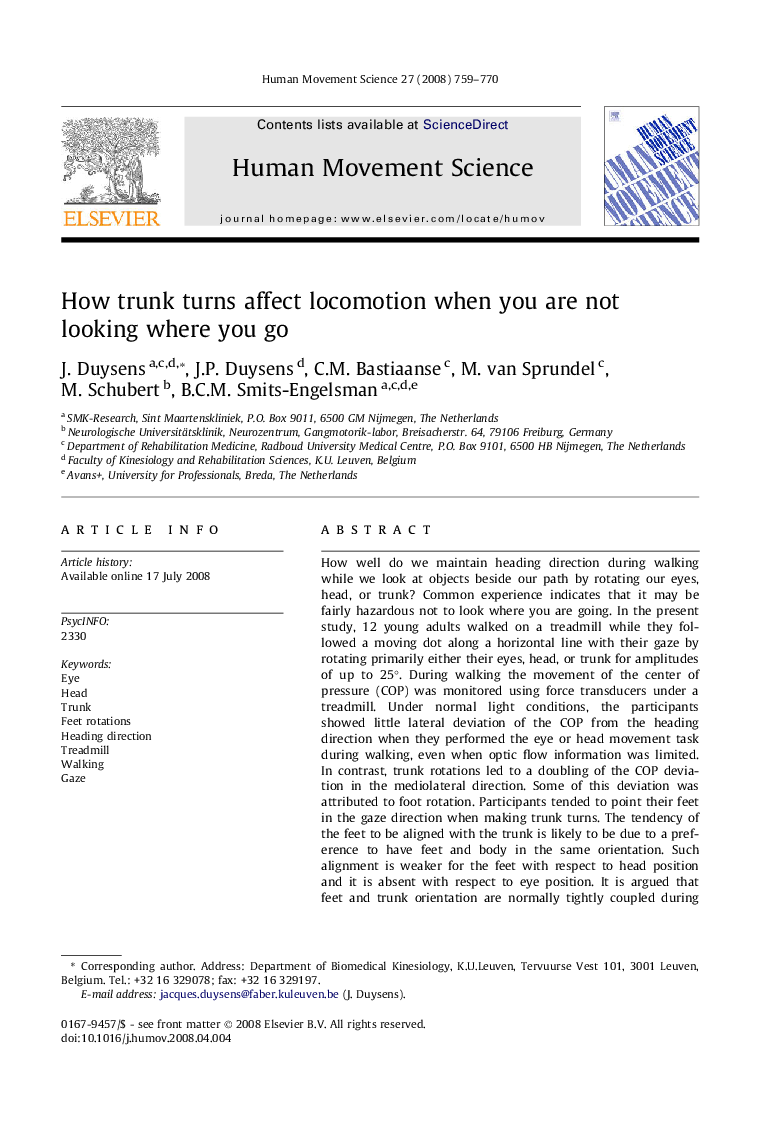| Article ID | Journal | Published Year | Pages | File Type |
|---|---|---|---|---|
| 928890 | Human Movement Science | 2008 | 12 Pages |
How well do we maintain heading direction during walking while we look at objects beside our path by rotating our eyes, head, or trunk? Common experience indicates that it may be fairly hazardous not to look where you are going. In the present study, 12 young adults walked on a treadmill while they followed a moving dot along a horizontal line with their gaze by rotating primarily either their eyes, head, or trunk for amplitudes of up to 25°. During walking the movement of the center of pressure (COP) was monitored using force transducers under a treadmill. Under normal light conditions, the participants showed little lateral deviation of the COP from the heading direction when they performed the eye or head movement task during walking, even when optic flow information was limited. In contrast, trunk rotations led to a doubling of the COP deviation in the mediolateral direction. Some of this deviation was attributed to foot rotation. Participants tended to point their feet in the gaze direction when making trunk turns. The tendency of the feet to be aligned with the trunk is likely to be due to a preference to have feet and body in the same orientation. Such alignment is weaker for the feet with respect to head position and it is absent with respect to eye position. It is argued that feet and trunk orientation are normally tightly coupled during gait and that it requires special abilities to move both segments independently when walking.
